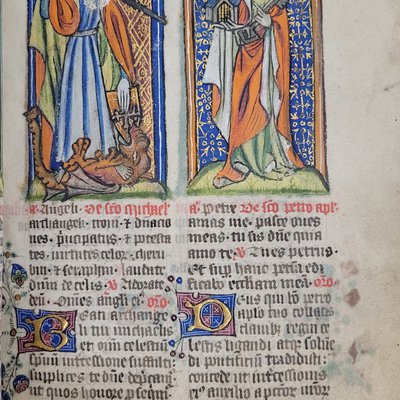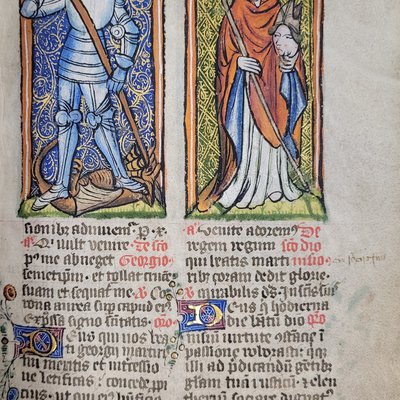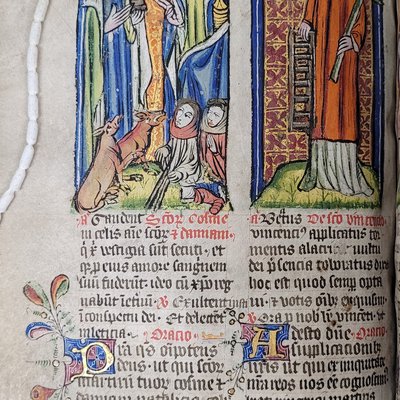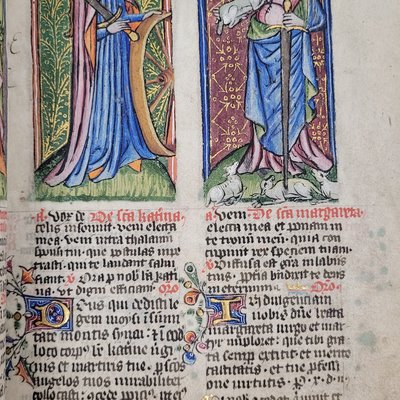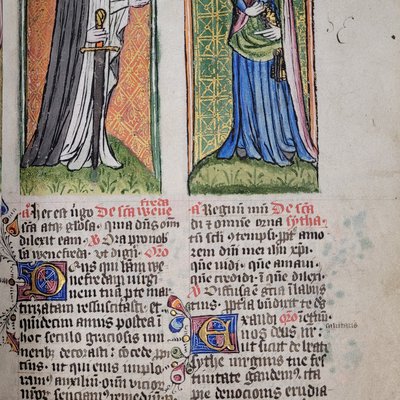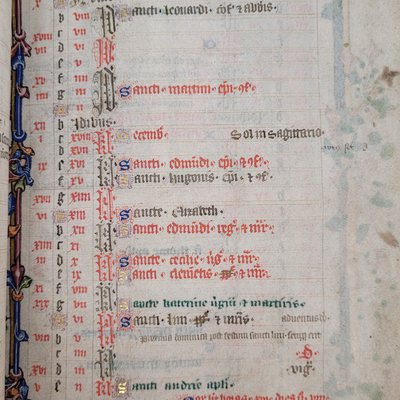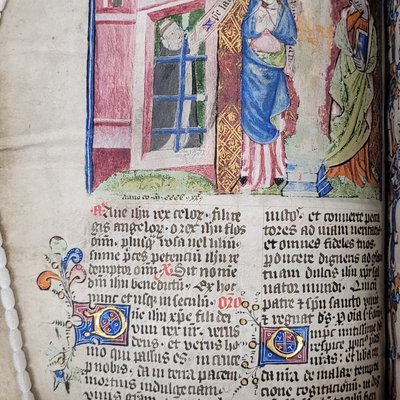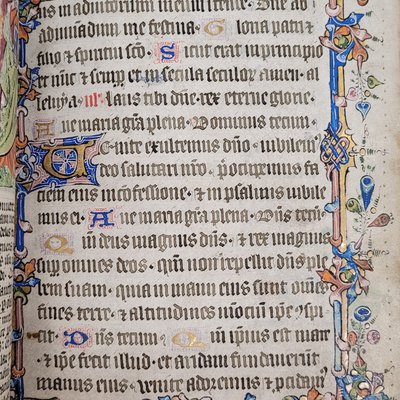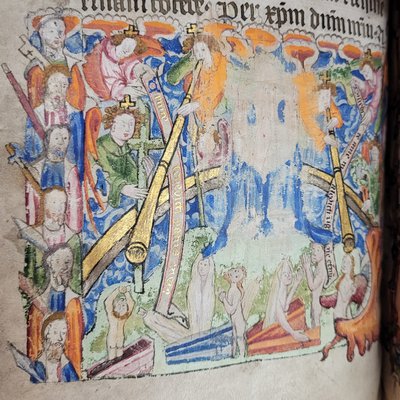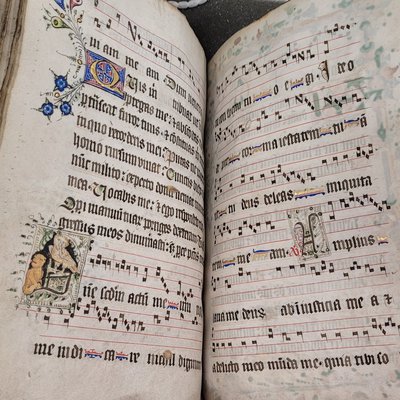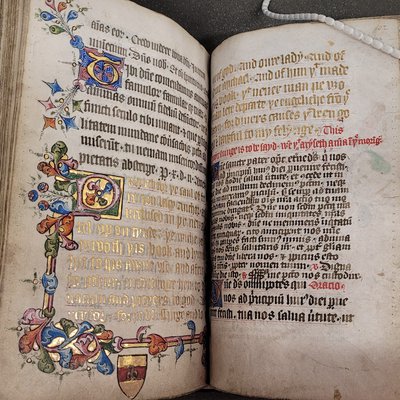August 2022
During the summer vacation many of us may turn to the latest fiction or non-fiction bestsellers. Devotional books, Books of Hours in particular, were the “bestsellers” of the late Middle Ages. Indeed, “from the fourteenth to the mid-sixteenth century, more books of hours were made than any other type of book.” (Stein). Books of Hours contain prayers linked to the canonical hours (the hours at which pious Christians were meant to pray) together with psalms, hymns, lessons, and other liturgical content. They were made for lay people, especially women, and are highly illuminated.
St John’s College holds several late medieval Books of Hours. Perhaps not the most beautiful but certainly the most interesting is MS 94. This Book of Hours was copied and illuminated by John Lacy, a Dominican recluse of Newcastle upon Tyne, Northumbria, over 14 years between 1420 and 1434. Lacy made the book as a gift to the chaplain of St Nicholas’s Church so that he and his successors pray for Lacy’s soul (“John Lacy: A Dominican Contemplative”, at p. 397). We even have a “self-portrait” of John Lacy in the illustration on folio 16v, showing himself inside his anchorite’s cell. According to Hanna, this is one of only two known English medieval portraits of manuscript illuminators (the other one, London, British Library, MS Harley 7026, fol. 56v, shows John Siferwas, fl. 1380-1421).
Lacy’s manuscript exhibits the usual content of a Book of Hours: suffrages for saints, a calendar, the hours proper, an abbreviated Psalter, prayers and hymns, and the office of the dead (all in Latin) together with additional devotional materials in Middle English. The vernacular texts include a tract on the Ten Commandments, instructional lists, a translation of a letter of Jerome, and Eight Chapters on Perfection by the 14th-century Augustinian mystic Walter Hilton. In addition, there are some unique and/or unpublished Middle English texts: an exemplum from the Vitae patrum (the lives of the early Christian Church Fathers), a form of confession, and a devotional text in verse.
Of the manuscript’s original 42 miniatures, five have been cut out. Most of the remaining 37 illuminations appear in the first section of the volume (folios 1v-9v) containing the suffrages of saints (i.e. prayers addressed to saints). The illustrations show the saints with their attributes (motifs associated with their lives or deaths used to identify them). Standing out are Saints Cosmas and Damian, as Lacy’s miniature is, again, one of only two English examples (the other being in London, British Library, MS Egerton 2572). The two saints were Arab physicians, possibly identical twins, who suffered martyrdom in Syria around 303 or 287 under Diocletian’s persecutions. Their emblems are poor people and dogs. Also worth mentioning is Lacy’s “unusual” (Hanna) devotion of Saint Winifred, which appears to support John Lacy’s linguistic connection to the Shropshire-Herefordshire border. Saint Winifred was a 7th-century Welsh martyr, who was venerated from the 12th century especially in Shrewsbury, Shropshire. Saint Winifred is presented with a red line under her head, a sword, and a book. The other two surviving illustrations are the above-mentioned self-portrait of John Lacy himself (folio 16v) and the Last Judgement with angels blowing golden trumpets and a hell-mouth devouring the damned (folio 56v).
To find out more about St John’s College’s historic collections, visit us at https://stjohnscollegelibraryoxford.org/ or follow us on Twitter @StJohnsOxLib.
References
“John Lacy: A Dominican Contemplative”, Life of the Spirit (1946-1964) 5:57 (1951), 397-400, at https://www.jstor.org/stable/43706596 [accessed 21/07/2022]
Hanna, Ralph, A Descriptive Catalogue of the Western Medieval Manuscripts of St. John's College, Oxford (Oxford, 2002)
Stein, Wendy, “The Book of Hours: A Medieval Bestseller”, The Met: Heilbrunn Timeline of Art History: Essays, 2017, at https://www.metmuseum.org/toah/hd/hour/hd_hour.htm [accessed 21/07/2022]
